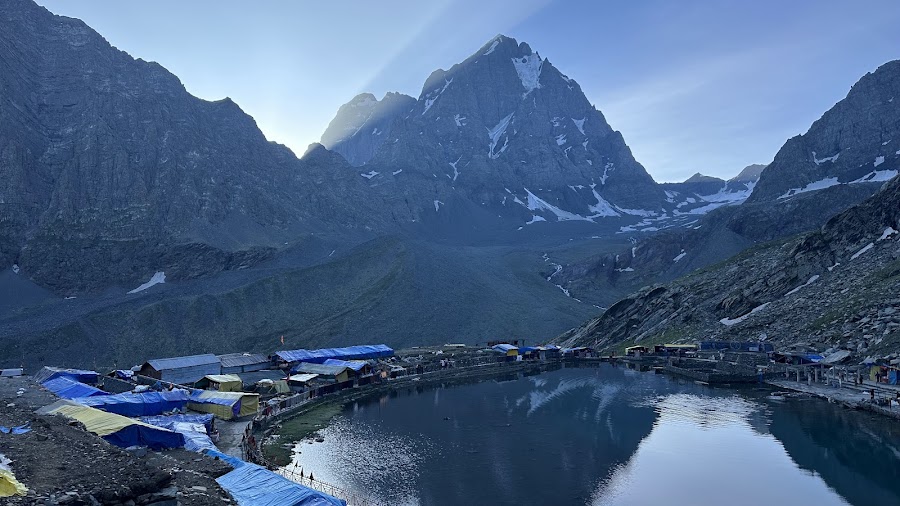
Manimahesh Lake
Chamba, India
- Attend the Manimahesh Yatra (if visiting during Yatra).
- Capture scenic views of the Himalayas.
- Explore the local Gaddi culture.
- Meditate by the serene lake waters.
- Take a holy dip in Manimahesh Lake.
- Trek to Manimahesh Lake from Hadsar.
- Visit the Chaurasi Temple in Bharmour.
Known for:
Description:
Manimahesh Lake, situated in the Pir Panjal range of the Himalayas in the Chamba district of Himachal Pradesh, is a high-altitude lake revered by Hindus. The lake is at an altitude of approximately 13,000 feet (4,000 meters) and is considered sacred, dedicated to Lord Shiva. The annual Manimahesh Yatra, a pilgrimage undertaken during the months of August and September, attracts thousands of devotees who come to take a dip in the holy waters. The lake's pristine beauty, surrounded by snow-capped peaks, offers breathtaking views and a serene atmosphere. The reflection of Mount Kailash (Chamba Kailash) in the lake's clear waters is considered a divine sight. The trek to the lake is challenging but rewarding, offering stunning landscapes and a spiritual experience.
History:
The history of Manimahesh Lake is deeply intertwined with Hindu mythology and local folklore. Legend says that Lord Shiva performed penance on the banks of this lake. The name 'Manimahesh' is derived from 'Mani' meaning jewel and 'Mahesh' which is another name for Lord Shiva. According to local beliefs, the lake was formed when Lord Shiva performed a miracle. The annual pilgrimage, Manimahesh Yatra, has been observed for centuries, with devotees believing that a dip in the lake washes away their sins. The lake has been a significant spiritual center for the Gaddi tribe, who consider Lord Shiva their principal deity. Over time, the lake has become a popular destination for both religious pilgrims and adventure seekers, drawn by its spiritual significance and natural beauty.